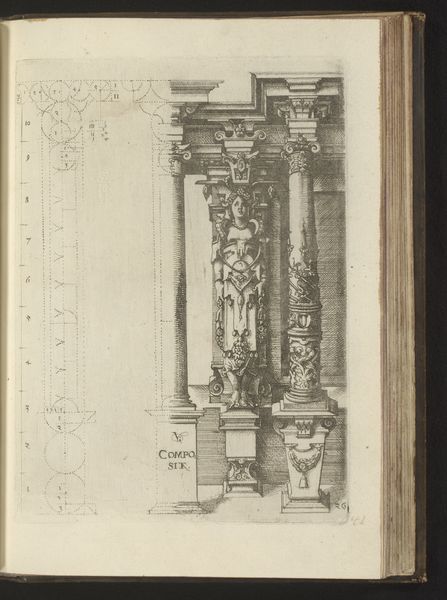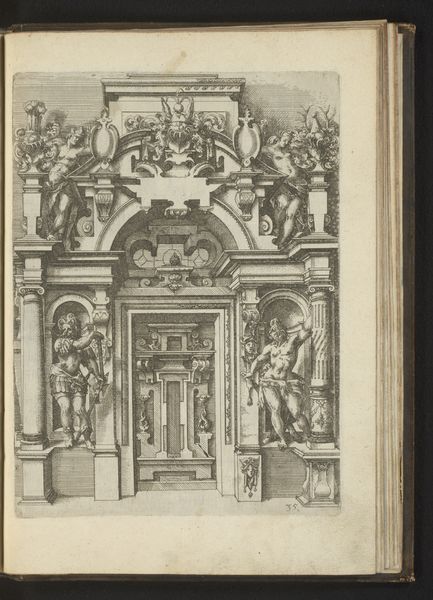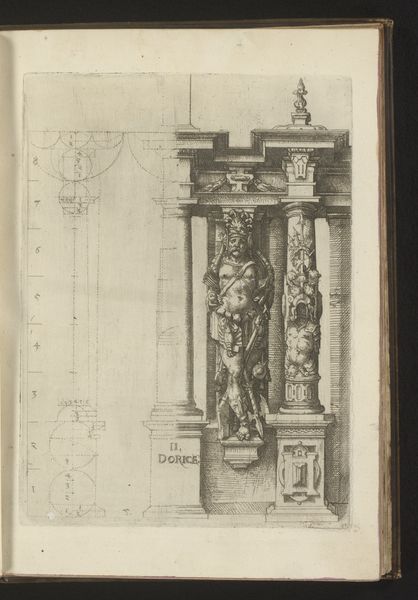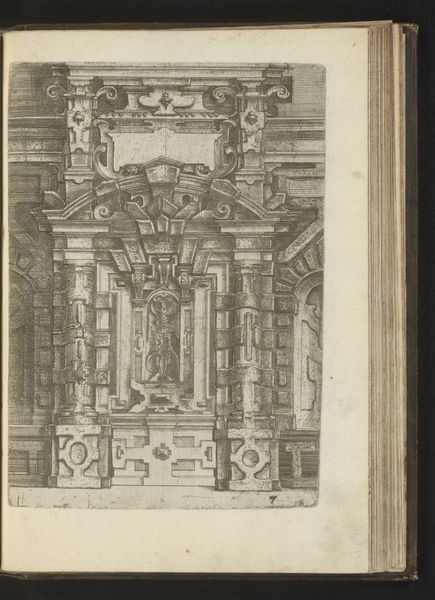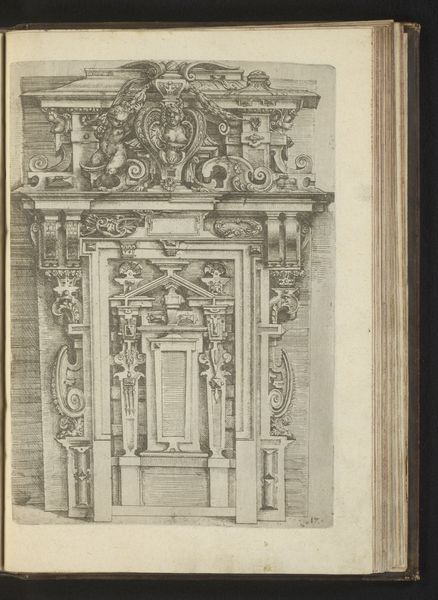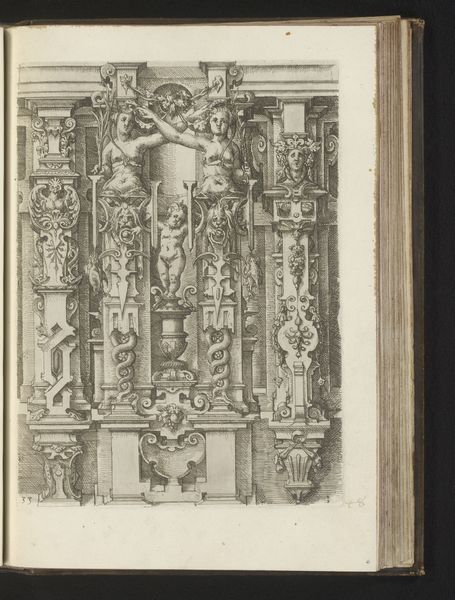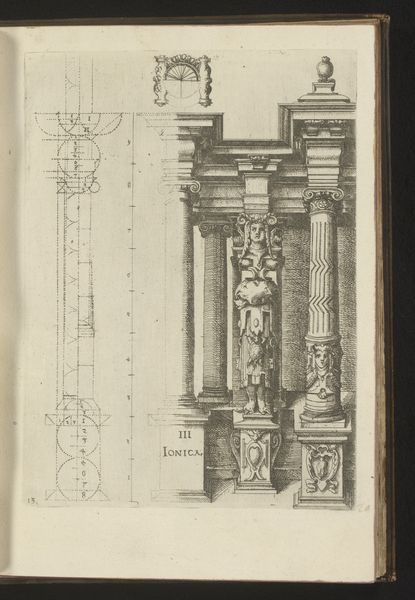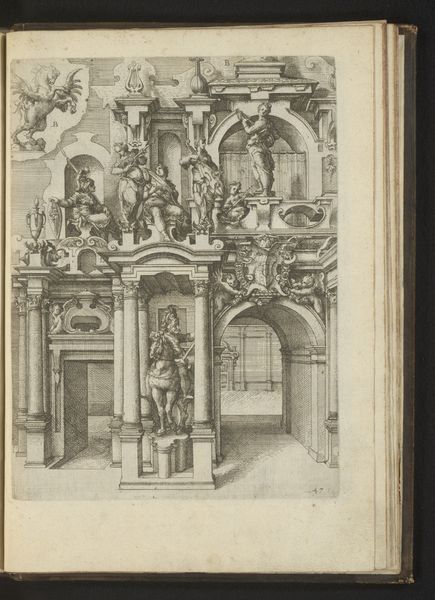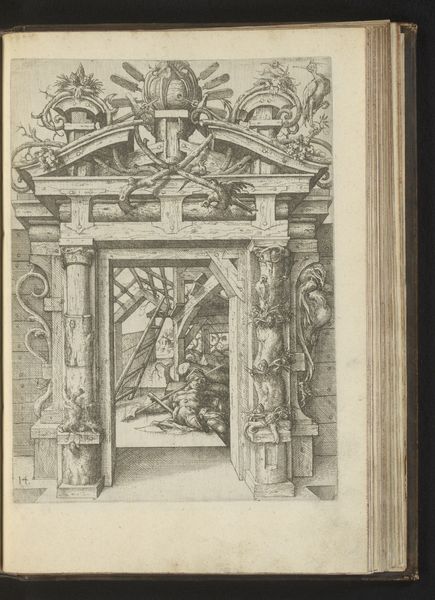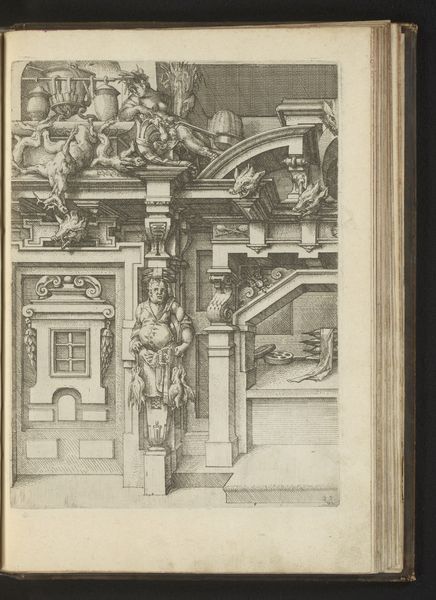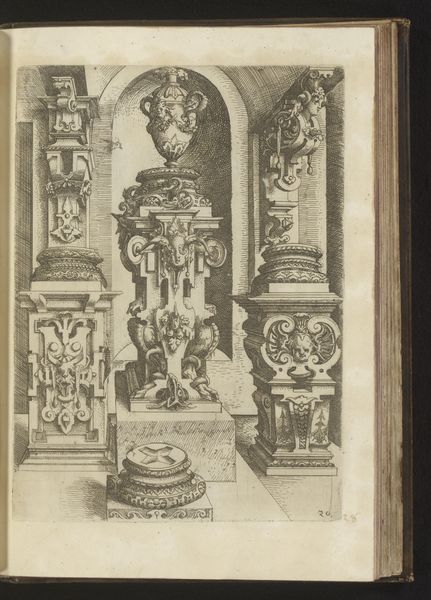
Verhoudingen van de Korinthische zuilenorde met een kariatide en een herme van opzij gezien 1593 - 1595
0:00
0:00
drawing, print, paper, ink, engraving, architecture
#
drawing
# print
#
figuration
#
paper
#
form
#
11_renaissance
#
ink
#
geometric
#
column
#
line
#
engraving
#
architecture
Dimensions: height 252 mm, width 185 mm
Copyright: Rijks Museum: Open Domain
Editor: Here we have Wendel Dietterlin's "Proportions of the Corinthian Order with a Caryatid and a Herm Seen from the Side," created between 1593 and 1595. It's an ink and paper engraving of a very ornamented, geometric looking structure. There's a nude woman serving as a pillar. What’s your read on a piece like this? Curator: This print reflects the cultural obsession during the late Renaissance with reviving classical forms, particularly in architecture. The figure of the caryatid – a female figure acting as a column – speaks volumes. What do you make of its inclusion alongside a meticulously diagrammed Corinthian order? Editor: It's a bit odd, seeing them juxtaposed like that – a rigid architectural structure right next to a human figure holding up what looks to be the same structure. Almost like it wants us to compare the two as load-bearing symbols, maybe? Curator: Exactly! Consider the power dynamics at play. Renaissance society often used classical imagery to reinforce its own values and hierarchies. These figures, both the caryatid and herm, aren’t merely decorative; they are statements about support, strength, and, potentially, the subjugation or idealization of certain groups. Where and for whom do you imagine images like this being displayed? Editor: Probably some sort of institution, like a court, school or museum – somewhere that its symbolism about power and ideals will carry through. A study in contrast – the strict, academic order alongside the almost baroque ornamentation. Curator: Precisely. And this contrast would have resonated with its original viewers, prompting them to reflect on the foundations of their own society and its relationship to classical ideals. This piece makes me reflect on how much visual vocabularies change over time. Editor: I hadn't really thought of how architecture was charged with meaning. I'll certainly view buildings differently from now on.
Comments
No comments
Be the first to comment and join the conversation on the ultimate creative platform.
